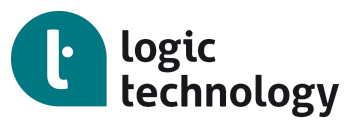Tools & Components
Tools and components for embedded development that make your life as a developer more efficient, fun and stress-free. Logic Technology offers only high-quality embedded software- and hardware tools and components.
The Unified Extensible Firmware Interface (UEFI) is a specification that defines a software interface between an operating system and platform firmware. UEFI is meant to replace the Basic Input/Output System (BIOS) firmware interface.
Boundary scan is a method for testing interconnects on printed circuit boards or sub-blocks inside an integrated circuit. Boundary scan is also widely used as a debugging method to watch integrated circuit pin states, measure voltage, or analyze sub-blocks inside an integrated circuit.
Tools for optimizing build times.
Code coverage is a measure used to describe the degree to which the source code of a program is tested by a particular test suite. A program with high code coverage has been more thoroughly tested and has a lower chance of containing software bugs than a program with low code coverage.
Coding standards are a set of guidelines for a specific programming language that recommend programming style, practices and methods for each aspect of a piece program written in this language. These conventions usually cover file organization, indentation, comments, declarations, statements, white space, naming conventions, programming practices, programming principles, programming rules of thumb, architectural best practices, etc.
A computer-on-module (COM) or System on Module (SOM) is a type of single-board computer (SBC), a subtype of an embedded computer system. An extension of the concept of system on chip (SoC) and system in package (SiP), COM lies between a full-up computer and a microcontroller in nature.
Analyzing software architecture facilitates communication between engineers, captures early decisions about the high-level design, and allows reuse of design components between projects.
A wide variety of card connectors, internal connectors and I/O connectors. The product range also includes excellent high speed connectors, cables and cable assemblies.
Safe databases for storing (critical) data.
There are four general types of device programmers: Gang programmers for mass production, development programmers for development and small-series production, pocket programmers for development and field service, and specialized programmers for certain circuit types only.
A file system controls how data is stored and retrieved on a data storage media. There are many different kinds of file systems. Each one has different structure and logic. Each one has different properties of speed, flexibility, security, size and more. File systems can be used on many different kinds of storage devices. Each storage device uses a different kind of media.
A file system controls how data is stored and retrieved on a data storage media. There are many different kinds of file systems. Each one has different structure and logic. Each one has different properties of speed, flexibility, security, size and more. File systems can be used on many different kinds of storage devices. Each storage device uses a different kind of media.
Highly modular functional test systems controllable via JTAG and Ethernet. The small physical footprint and stowage features maximise the use of production space and also makes the J-Testr portable and easy to store.
An integrated development environment (IDE) or interactive development environment is a software application that provides comprehensive facilities to computer programmers for software development. An IDE normally consists of a source code editor, build automation tools and a debugger. Most modern IDEs offer Intelligent code completion features. Some of them are based on the Eclipse framework.
Although JTAG’s early applications targeted board level testing, the JTAG standard was designed to assist with device, board, and system testing, diagnosis, and fault isolation. Today JTAG is used as the primary means of accessing sub-blocks of integrated circuits, making it an essential mechanism for debugging embedded systems which may not have any other debug-capable communications channel.
In Model Driven Software Engineering (MDSE), the model of a software application is specified on a higher abstraction level than traditional programming languages. The model is automatically transformed into a working software application by generating validated code. While the used model is on a higher abstraction level it is much smaller compared to the same model expressed in code: each element in the model represents multiple lines of code. Hence, you can build more functionality in the same time.
The User Interface (UI), or more commonly known as Graphical User Interface (GUI), are a very important aspect of modern products that need visual interaction with Humans. Designing the visual composition and temporal behavior of a GUI is therefore an important part of software application programming. Its goal is to enhance the efficiency and ease of use for the underlying logical design of a program. A GUI-Builder normally consists of a library of icons and functionality and an application that lets you build the GUI in a simulated environment.
Unit testing is a method by which individual units of source code, sets of one or more computer program modules together with associated control data, usage procedures, and operating procedures are tested to determine if they are fit for use. Intuitively, one can view a unit as the smallest testable part of an application. In procedural programming, a unit could be an entire module, but it is more commonly an individual function or procedure. In object-oriented programming, a unit is often an entire interface, such as a class, but could be an individual method.
